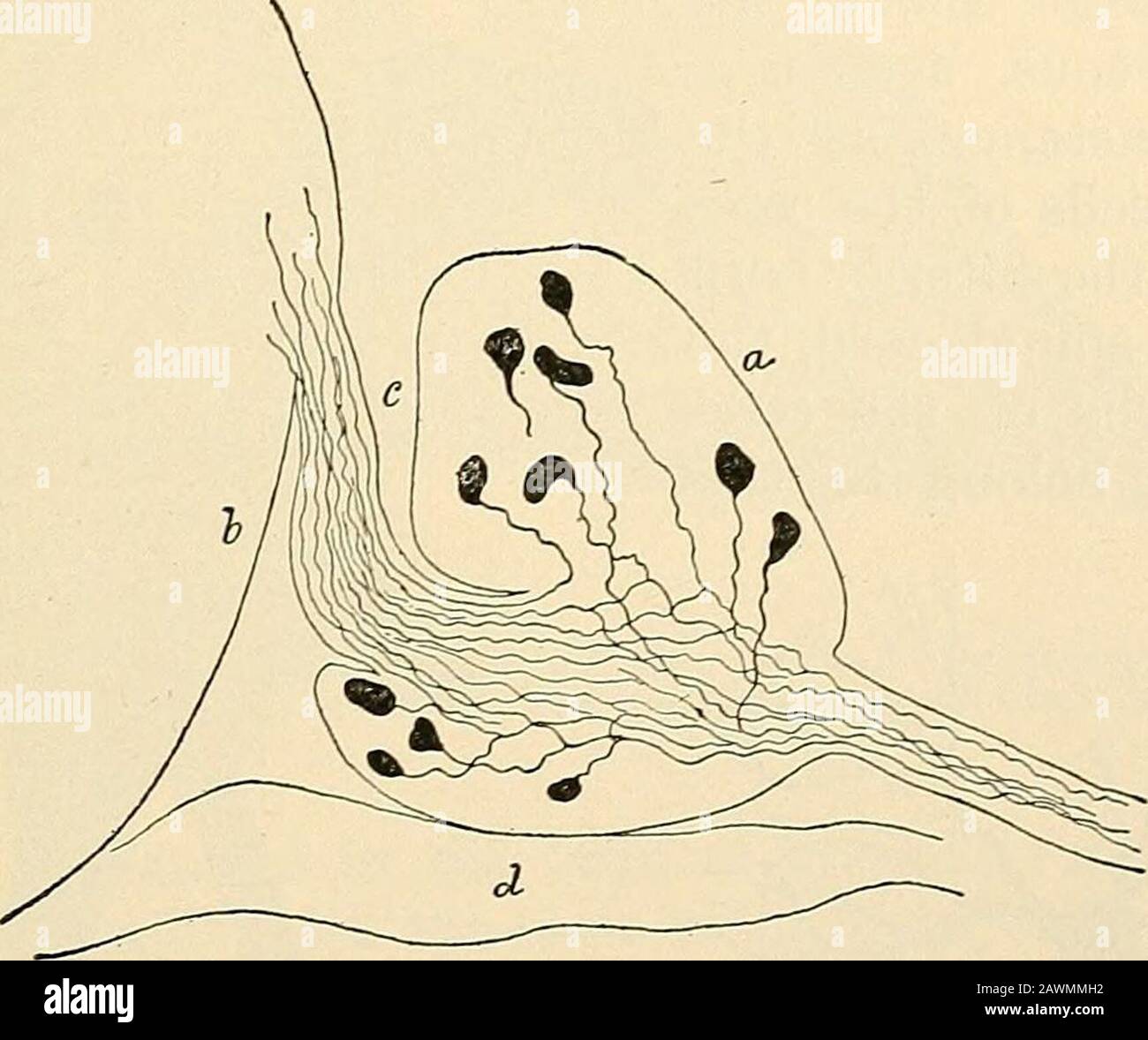A text-book of physiology for medical students and physicians . ceedings of the Royal Society, 1908, B.vol. lxxx., 414. PROPERTIES OF THE NERVE CELL. 133 The nerve cells found in the sensory ganglia exhibit, as a matter of fact,a number of different types, some of which possess short dendritic processes.These histological variations cannot as yet be given a physiological signifi-cance, but their occurrence certainly seems to indicate a possibility thatthe sensory ganglia may have a much more varied physiological activitythan has been attributed to them heretofore. For a description of thesegan

Image details
Contributor:
The Reading Room / Alamy Stock PhotoImage ID:
2AWMMH2File size:
7.1 MB (225.2 KB Compressed download)Releases:
Model - no | Property - noDo I need a release?Dimensions:
1727 x 1446 px | 29.2 x 24.5 cm | 11.5 x 9.6 inches | 150dpiMore information:
This image is a public domain image, which means either that copyright has expired in the image or the copyright holder has waived their copyright. Alamy charges you a fee for access to the high resolution copy of the image.
This image could have imperfections as it’s either historical or reportage.
A text-book of physiology for medical students and physicians . ceedings of the Royal Society, 1908, B.vol. lxxx., 414. PROPERTIES OF THE NERVE CELL. 133 The nerve cells found in the sensory ganglia exhibit, as a matter of fact, a number of different types, some of which possess short dendritic processes.These histological variations cannot as yet be given a physiological signifi-cance, but their occurrence certainly seems to indicate a possibility thatthe sensory ganglia may have a much more varied physiological activitythan has been attributed to them heretofore. For a description of theseganglia and a classification of their cells under eight different types con-sult Cajal in Ergebnisse der Anat. u. Entwickelungsgeschichte, vol. xvi., 1906. So far as the sensory fibers of the spinal and cranial nervesare concerned, it is worth noting also that all of them arise fromcells lying outside the main axis of the central nervous system.It has been a question whether the sensory impulses broughtto the ganglion cells through the peripheral process (sensory. Fig. 60.—Bipolar cells in the posterior root ganglion. Section through spinal gan-glion of newborn mouse (Lenhossek): a, The spinal ganglion; b, the spinal cord; c, theposterior, d, the anterior root. fiber) passes into the body of the cell before going on to thecord or brain, or whether at the junction of the two processesit simply passes on directly to the cord. According to thehistological structure there is no apparent reason why an impulseshould not pass directly from the peripheral to the centralprocess at the junction, but whether or not this really occursand the relation of the ganglion cell to the conducting path arequestions that must be left unsettled at present. II. The multipolar cells. The processes of these cells fall intotwo groups: the short and branching dendrites with an innerstructure resembling that of the cell body, and the axon or axiscylinder process (Fig. 59). According to the structure of this